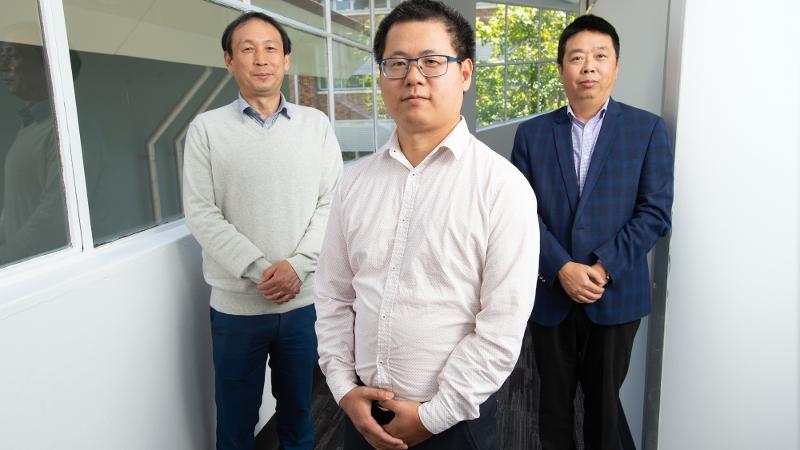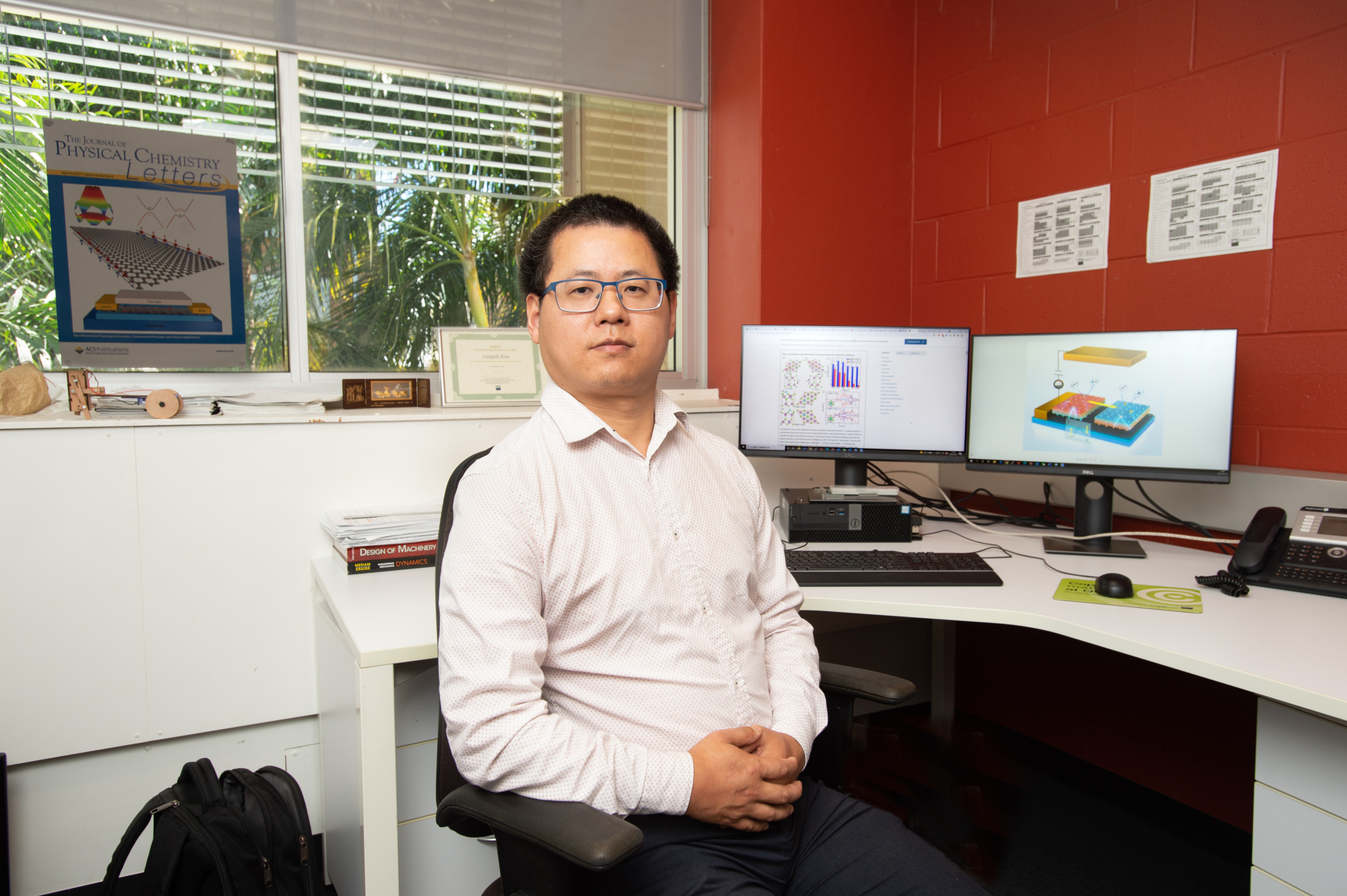
The goal of tackling global warming by turning carbon dioxide into fuel could be one step closer with researchers using a supercomputer to identify a group of “single-atom” catalysts that could play a key role.
Researchers from QUT’s Centre for Materials Science, led by Associate Professor Liangzhi Kou, were part of an international study that used theoretical modelling to identify six metals (nickel, niobium, palladium, rhenium, rhodium, zirconium) that were found to be effective in a reaction that can convert carbon dioxide into sustainable and clean energy sources.
The study published in Nature Communications involved QUT researchers Professor Aijun Du, Professor Yuantong Gu and Dr Lin Ju
Professor Kou said the research was conducted by modelling the experiments using the National Computational Infrastructure at the Australian National University, looking at how single atoms of the metals would react with two-dimensional pieces of “ferroelectric” materials.
Ferroelectric materials have a positive charge on one face, and negative charge on another, and this polarization can be reversed when a voltage is applied.
In the theoretical modelling, the researchers found that adding the atom of the catalyst metal to the ferroelectric material resulted in converting the greenhouse gas into a desired chemical fuel.
Once the polarity is reversed, the state will be preserved to act as a catalyst in converting the carbon dioxide.

Professor Kou said while single-atom catalysts to be used in reducing carbon dioxide was proposed a decade ago, this research takes the field forward significantly.
“We have designed a special chemical catalyst, it can convert the greenhouse gas CO2 into the desired chemical fuels. The conversion efficiency can be controlled using a feasible approach,” Professor Kou said.
“It means we for the first time developed the abilities to speed up or slow down, even switch of the chemical reaction.
“Carbon dioxide is the main reason of global warming due to the greenhouse effect, to convert it into the chemical fuels is not only important for our environments, but also helpful to solve the energy crisis.”
Dr Ju, first author on the study, said the research work provided a guidance for the design of novel catalysts which could produce significant impacts for the chemical industry.
Professor Kou said the long-term goal in this area of research was to find ways to turning carbon dioxide into clean energy sources.
Professor Kou said the results of this study could eventually lead to a way of adding a coating to engines or industrial systems that would convert carbon dioxide instead of releasing more of the gas into the atmosphere.
The QUT researchers are from the School of Mechanical, Medical and Process Engineering, and School of Chemistry and Physics.
Media contact:
Rod Chester, QUT Media, 07 3138 9449, rod.chester@qut.edu.au
After hours: QUT Media, 0407 585 901, media@qut.edu.au


